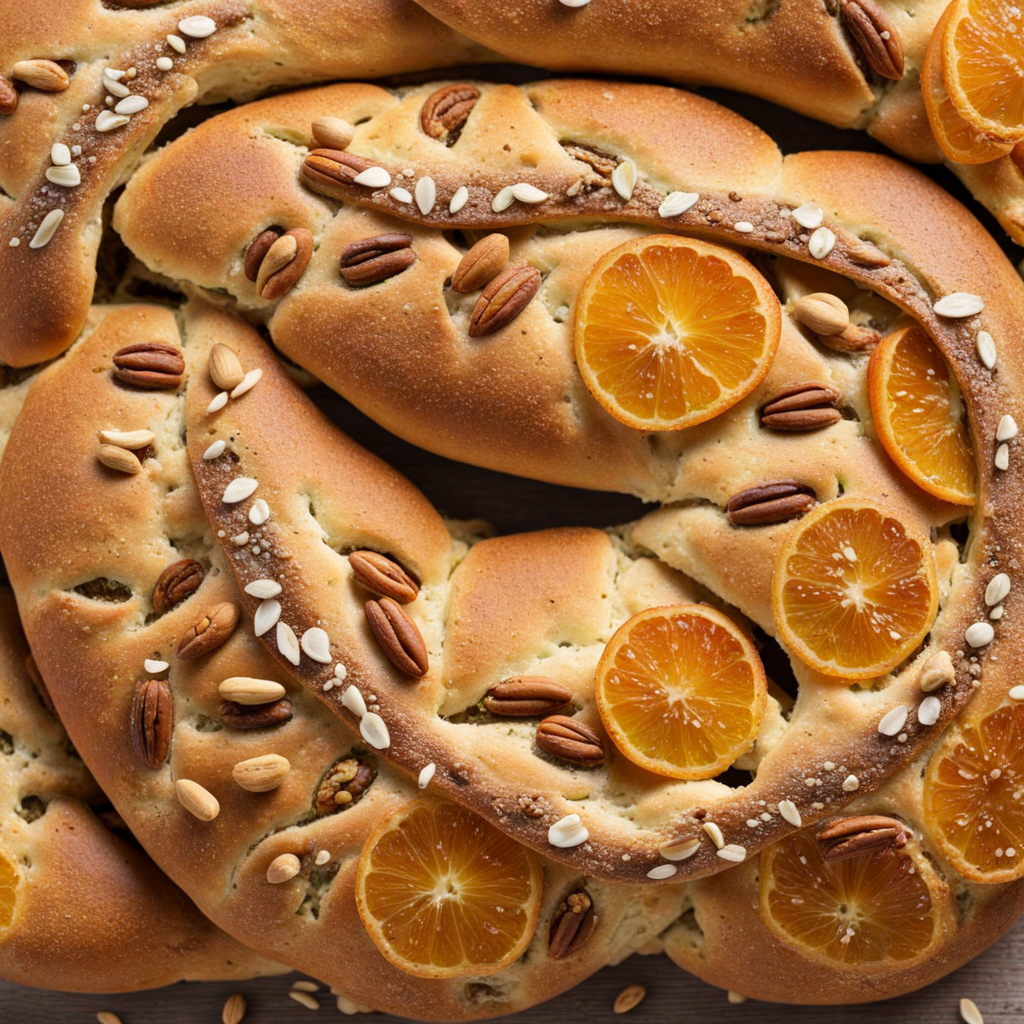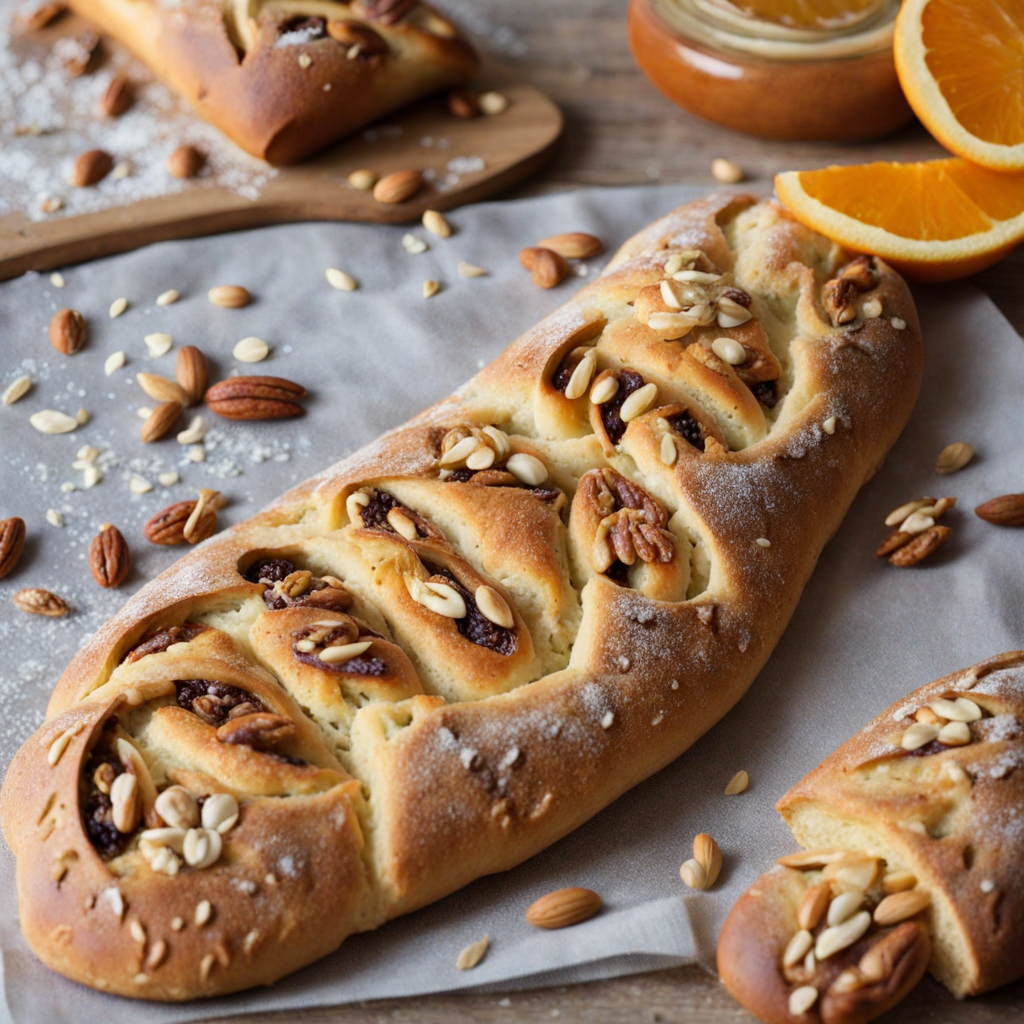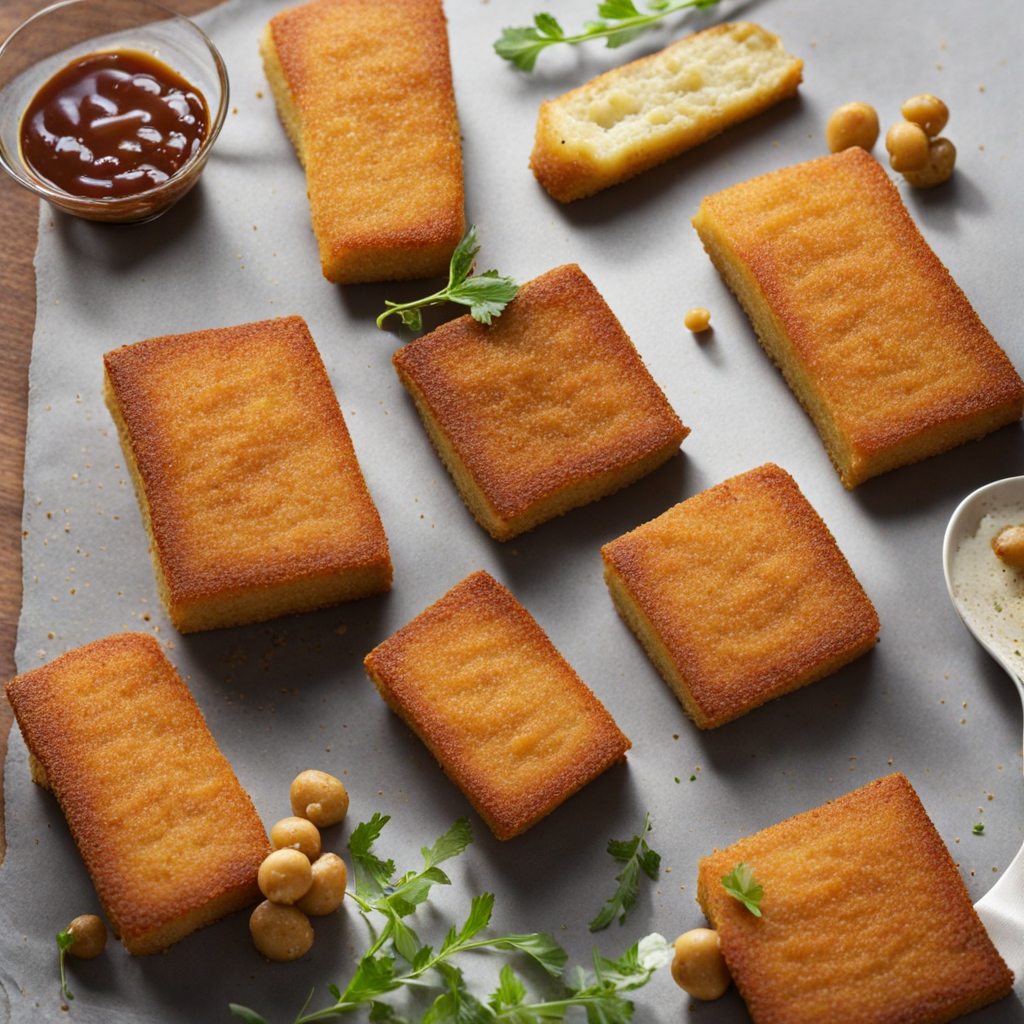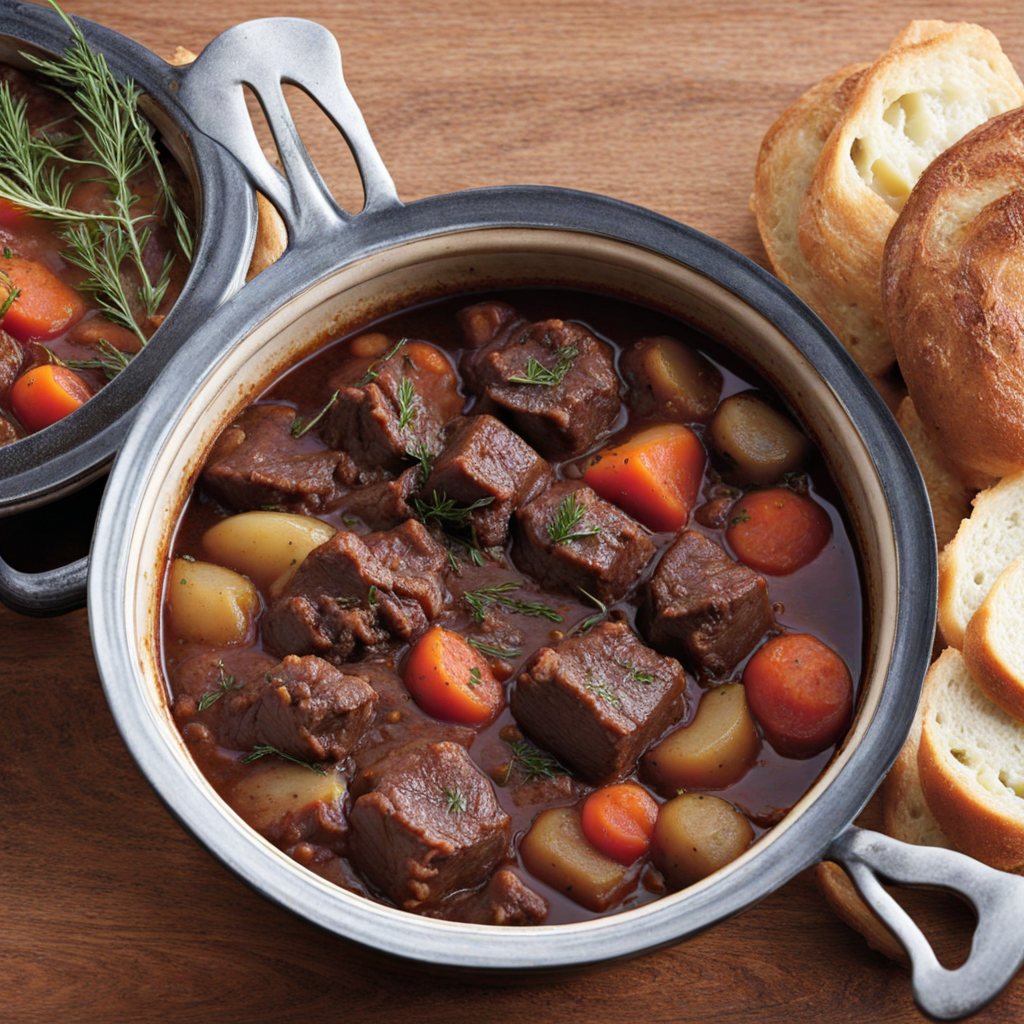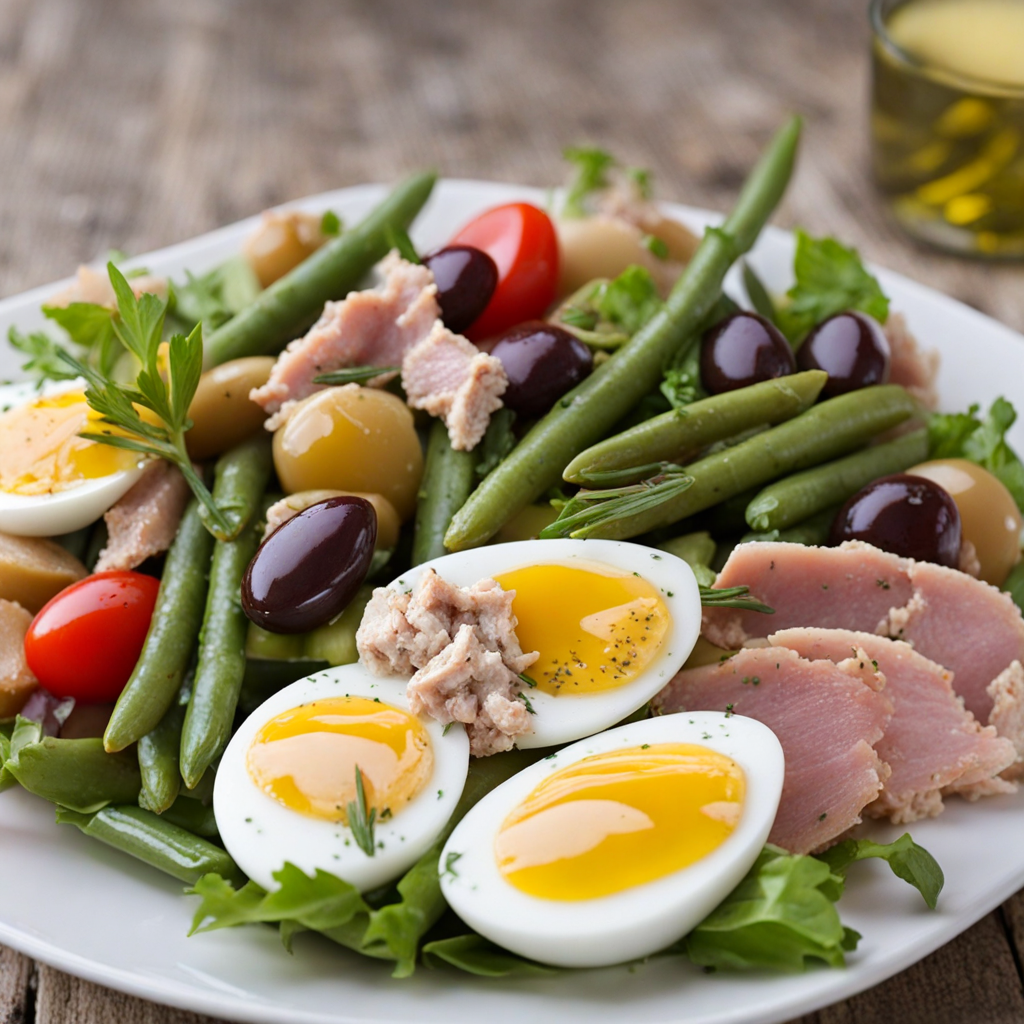Fougasse
Fougasse is a delightful Mediterranean flatbread that hails from the culinary traditions of Monaco, characterized by its crisp exterior and soft, airy interior. This rustic bread is often shaped into a flat oval or a leaf-like form, showcasing an array of decorative cuts that not only enhance its visual appeal but also help it to bake evenly. The dough is typically made with simple ingredients such as flour, water, yeast, and salt, yet the magic lies in the addition of various toppings and fillings that can elevate its flavor profile. From fragrant herbs like rosemary and thyme to savory olives and sun-dried tomatoes, each variation offers a unique taste experience that reflects the vibrant flavors of the Mediterranean region. One of the most beloved aspects of fougasse is its versatility. It can be enjoyed warm straight from the oven, making it an ideal companion for dipping into olive oil or spreading with a rich tapenade. Alternatively, it can serve as a hearty addition to a charcuterie board, pairing wonderfully with cured meats and cheeses. The texture is both chewy and crisp, providing a satisfying contrast that makes every bite an indulgence. The aromatic herbs and toppings infuse the bread with a robust flavor that lingers on the palate, inviting you to savor each mouthful. In Monaco, fougasse is often enjoyed as a casual snack or served at family gatherings and festive occasions. Its alluring aroma wafting through the air can evoke a sense of warmth and community, making it a cherished staple in local bakeries and homes alike. Whether you're sharing it with loved ones or savoring it on your own, fougasse offers an authentic taste of Monaco's culinary heritage, embodying the essence of Mediterranean cooking with each delectable bite.
How It Became This Dish
The Fougasse: A Culinary Jewel of Monaco #### Origins of Fougasse Fougasse, a type of flatbread, has a rich and storied history that resonates deeply within the culinary traditions of Monaco and the broader Mediterranean region. The origins of this delightful bread can be traced back to ancient Roman times, where similar flatbreads were made and enjoyed across the Roman Empire. The term "fougasse" is believed to come from the Latin word "focus," meaning "hearth," reflecting the bread's traditional method of baking in the heat of an oven or fireplace. In the region that is now modern-day Monaco, fougasse has been embraced as a staple food, with its roots intertwined with the cultural and agricultural practices of the area. The Mediterranean climate, characterized by warm summers and mild winters, allowed for the cultivation of wheat and other grains, which would eventually serve as the foundation for this beloved bread. #### Cultural Significance The cultural significance of fougasse in Monaco extends beyond its role as a mere sustenance; it is a symbol of the region's culinary heritage. Fougasse is often associated with communal gatherings and celebrations, highlighting the importance of food as a means of bringing people together. In Monaco, sharing a loaf of fougasse can signify hospitality and friendship, making it an integral part of social interactions. Fougasse is particularly popular during festive occasions. It is commonly prepared for Christmas and other local celebrations, often flavored with various ingredients such as olives, herbs, and cheese. This versatility not only showcases the creativity of local bakers but also illustrates the influence of regional ingredients on traditional recipes. #### The Development of Fougasse Over Time As Monaco's culinary landscape evolved, so too did the fougasse. The 19th century marked a significant turning point in the region's baking practices due to the influence of the French culinary tradition. French culinary techniques and flavors began to permeate Monégasque cuisine, leading to the development of various fougasse recipes that incorporated local ingredients and flavors. During this period, bakers started experimenting with different fillings and toppings for fougasse. Traditional variations began to emerge, with some bakers adding regional specialties such as aromatic herbs like rosemary and thyme, sun-dried tomatoes, or local cheeses like goat cheese. These innovations not only enhanced the flavor profile of the bread but also reflected the agricultural abundance of the region. One of the most iconic variations of fougasse found in Monaco is the "Fougasse de Nice," which hails from neighboring Nice, France. This version is often enriched with olives and herbs, showcasing the Provençal influence on the bread. The blending of culinary traditions highlights the interconnectedness of Mediterranean cultures and their shared appreciation for fresh, local ingredients. #### Modern Interpretations and Global Influence In the 20th century, as Monaco transformed into a hub of luxury and tourism, the culinary scene experienced a renaissance that brought fougasse into the spotlight. Top chefs and bakers began to elevate traditional recipes, incorporating modern techniques and gourmet ingredients. Fougasse became a sought-after item in upscale restaurants and bakeries, captivating both locals and visitors alike. With the rise of international cuisine, fougasse has also made its way beyond the borders of Monaco into the global culinary landscape. It has been embraced by chefs worldwide, who experiment with diverse flavors and ingredients. Today, one can find variations of fougasse that incorporate ingredients from different cultural traditions, including spices from North Africa and influences from Asian cuisine. This fusion demonstrates the adaptability of fougasse as a culinary canvas, allowing it to evolve while still honoring its rich history. #### Fougasse Today: A Symbol of Culinary Heritage Today, fougasse remains a beloved staple in Monaco, enjoyed by locals and tourists alike. It is often served alongside meals, used as a base for sandwiches, or simply enjoyed on its own with a drizzle of olive oil. The bread’s versatility means it can complement a wide range of dishes, from fresh salads to hearty stews, making it a cherished addition to any dining experience. Furthermore, the preservation of traditional fougasse recipes is a testament to the importance of culinary heritage in Monaco. Local bakeries often pride themselves on their artisanal baking methods, using high-quality ingredients and traditional techniques passed down through generations. This commitment to quality not only honors the past but also ensures that future generations can continue to enjoy this delightful bread. #### Conclusion Fougasse is more than just a type of bread; it is a reflection of Monaco's rich culinary history, cultural significance, and continuous evolution. From its ancient origins to its modern interpretations, fougasse embodies the spirit of the Mediterranean, celebrating local ingredients, communal gatherings, and the art of baking. As Monaco continues to evolve as a gastronomic destination, fougasse remains a cherished symbol of the region's culinary identity, inviting all to partake in its delicious legacy. Whether enjoyed in a bustling café or at a festive gathering, fougasse serves as a delicious reminder of the power of food to connect us to our history, culture, and each other.
You may like
Discover local flavors from Monaco


